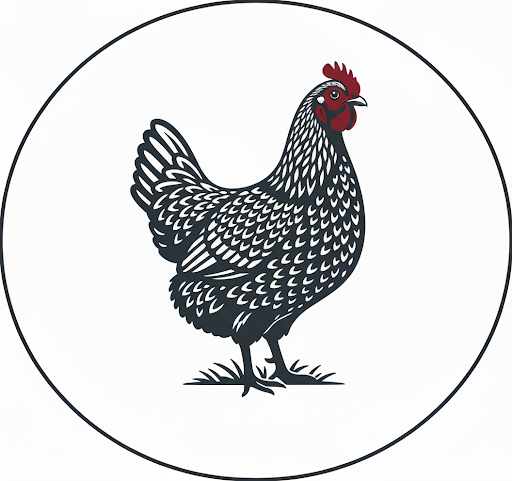Strutting your stuff. Barnevelders and their eggs on show.
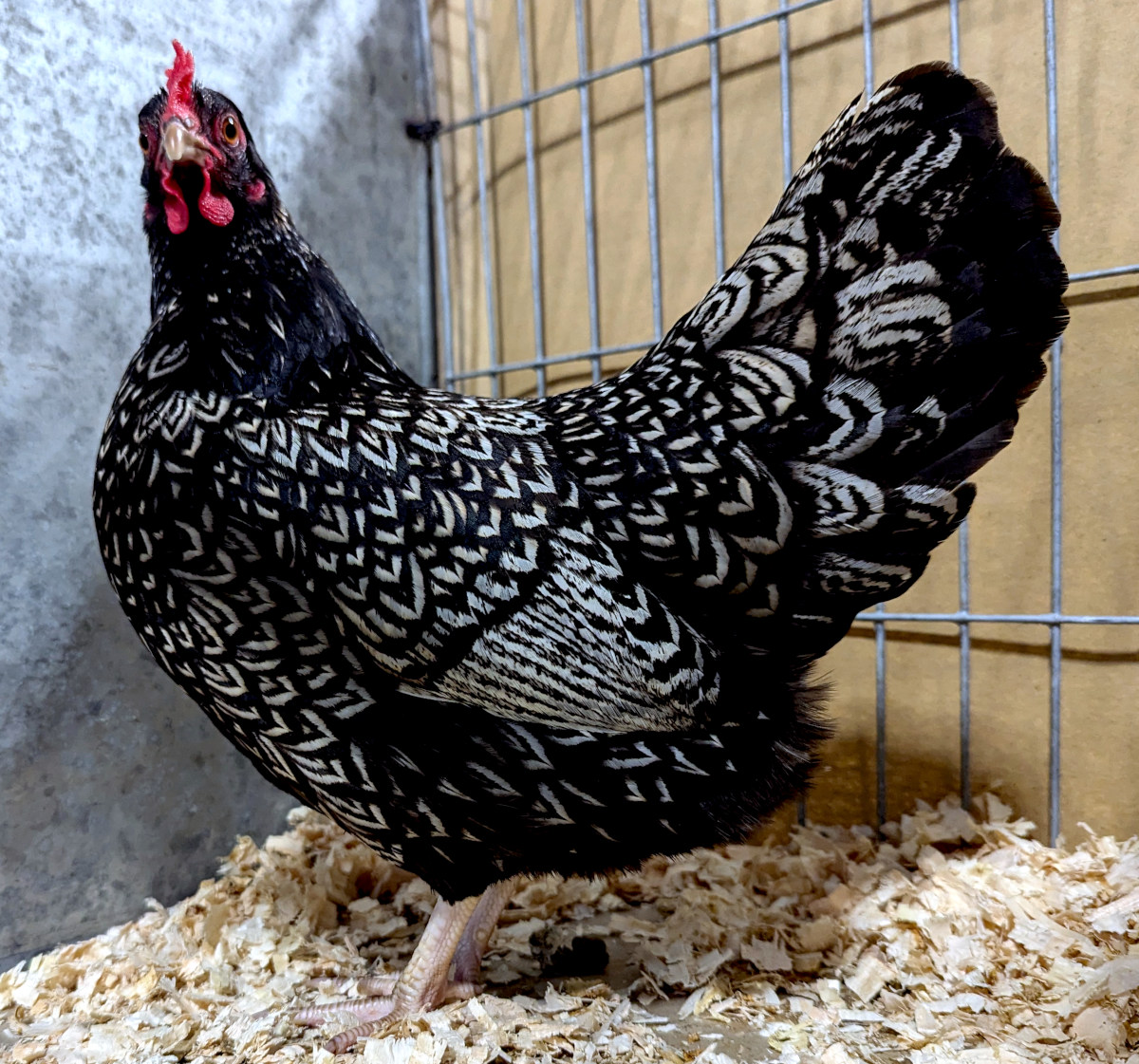
Showing Barnevelders and their eggs is more than a competition, it’s a celebration of beauty, your hard work, and community.
Table of Contents
Whether you’re a 4-H participant or a backyard enthusiast, these birds make every moment rewarding.
Below: A trio of Silver Laced Barnevelder bantams. I think they are pretty stunning aside from the comb fault in the cockerel.
Learning to care for Barnevelders, preparing them for show, and understanding their breed standard provides a comprehensive educational experience. The distinct lacing pattern also offers a great visual for understanding feather genetics and quality.
Show preparation: Getting your Barnevelder ready to shine:
Barnevelders, with their striking double-laced plumage and calm demeanour, are a joy to raise and a real head-turner at exhibitions. Let's dive into what makes these Dutch charmers shine in the show pen and how you can prepare your birds and their beautiful eggs for the judge's discerning eye.
Health check: Start with a healthy bird. I always check over my birds for mites, clear eyes, clean vent and a bright red comb. A vet’s clearance ensures no diseases sneak into the show. Healthy birds glow with vitality, and judges notice.
Below: This blue bantam is healthy and in excellent condition.
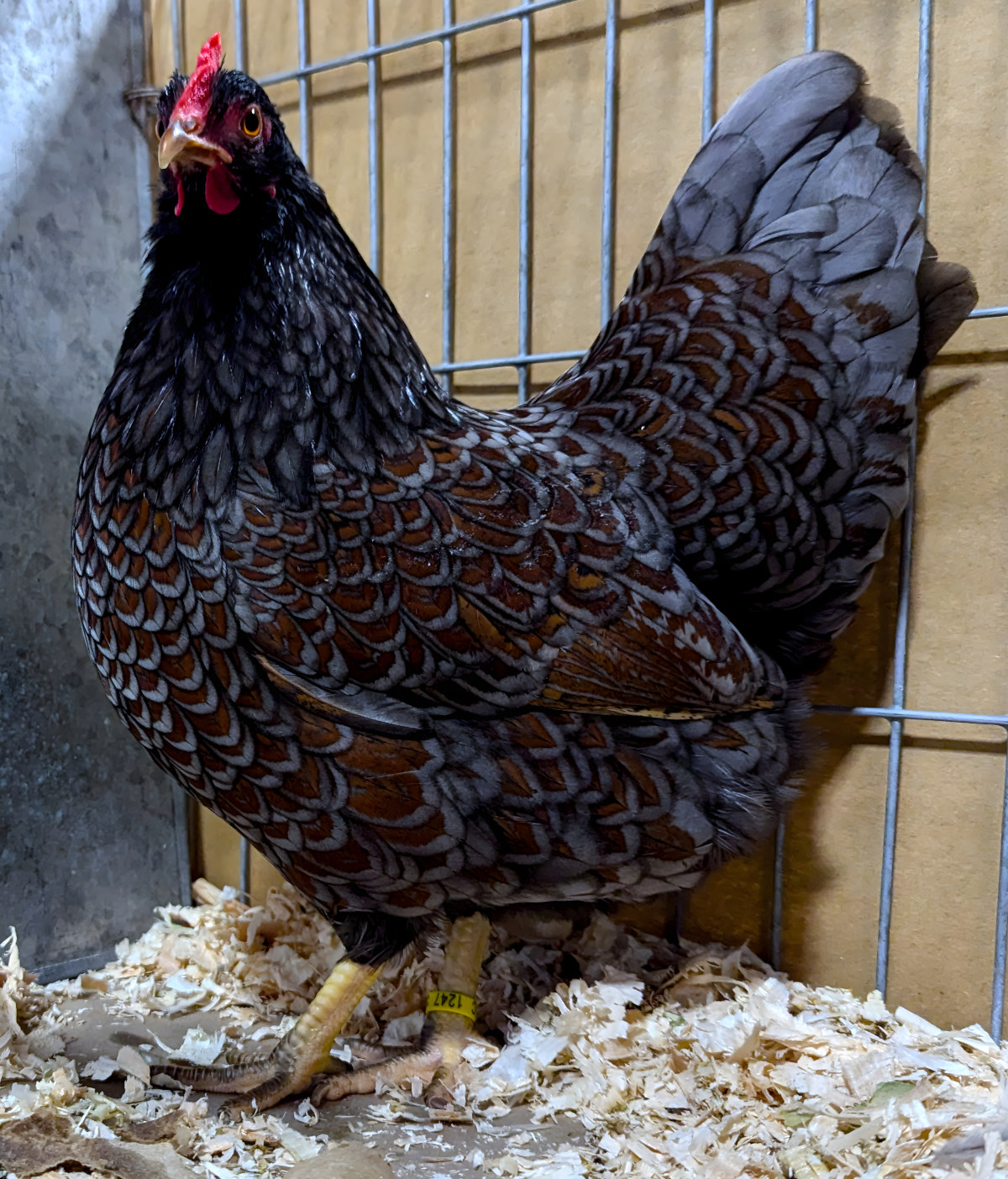
Grooming: Bathing a chicken sounds wild, but it might be essential if the bird is dirty and muddy. Use a mild shampoo, warm water, and a blow dryer on low to fluff those feathers. Clean beaks, feet, and vents are a must as judges inspect every inch. I use a toothbrush on the legs and feet.
Training: Barnevelders are docile, but practice handling them to keep them calm. I carry mine around the yard on a regular basis to mimic show handling. It builds trust and reduces stress. Associate the handling with treats and soon it will become a breeze!
Travel cages and boxes: I use specially built hardwood transport cages that have been designed to keep the birds separate and comfortable.
Egg prep: For egg competitions, I select eggs with uniform shape, colour, and texture. Clean them gently with at most a damp cloth, no scrubbing, as it damages the shell’s bloom and will remove the brown colour from the shell. I store show eggs in a cool, stable environment to preserve quality.
Cage etiquette: I always ensure my birds are comfortable in a cage well before show day arrives. At the show, ensure your bird’s cage is clean and well-bedded.
Below: The show chicken has to be comfortable in the cage.
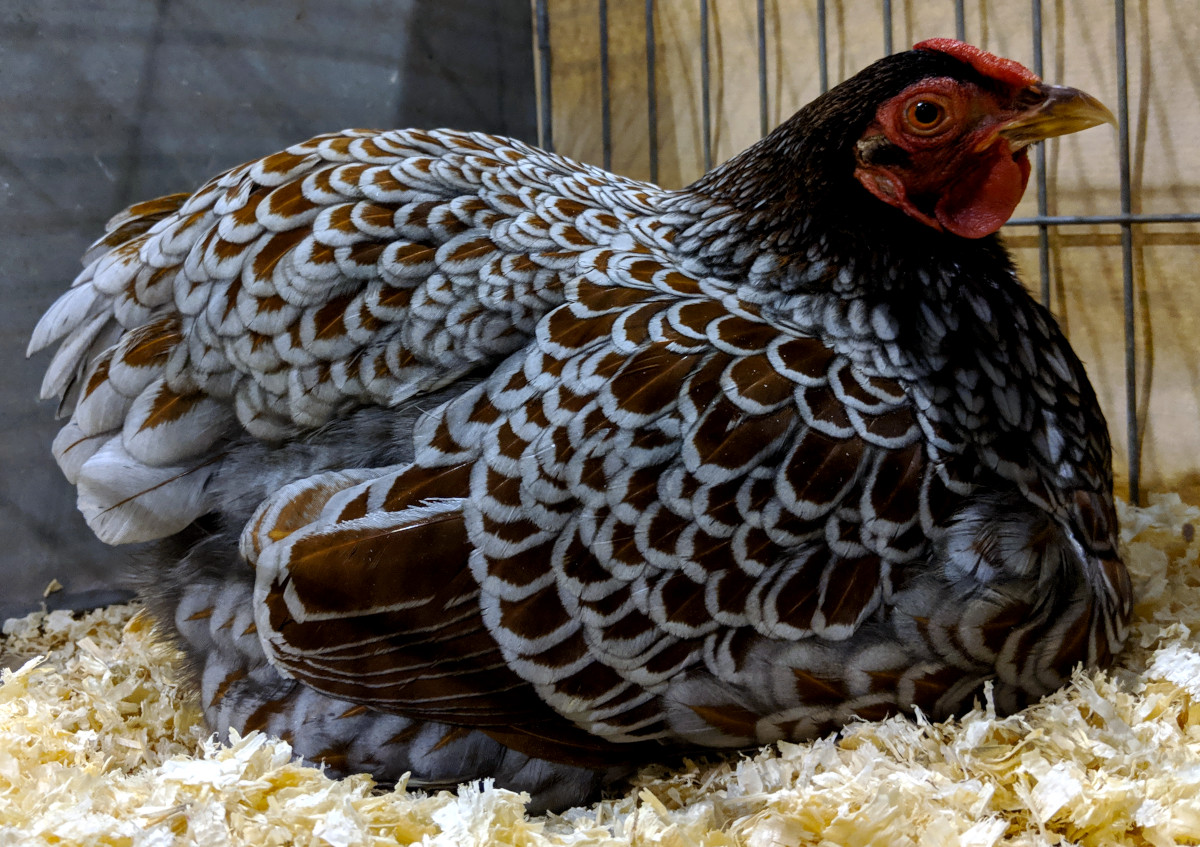
I add a small waterer, a feed cup and a chunk of root vegetable for them to peck on. A comfy bird is a happy bird, and happy birds impress judges.
Pro tip: Pack a show kit with grooming supplies, health records, and everything else you might need.
Take a sense of humour: I have had a bird decide to moult days before a show, I learned to roll with the punches!
At poultry shows, judges follow APA or your local or regional standards.
For Barnevelders, they assess:
Feather Quality: Laced patterns should be crisp and uniform. I’ve seen judges run fingers over feathers to check texture and see if there has been any interference.
Type and Carriage: Judges want to see a Barnevelder with a compact, U-shaped body. The bird should stand confidently, with an alert and active disposition.
Below: A judge will always watch to see how a bird moves. Carriage and stance are often overlooked when selecting your show stock.
Body Type: A sturdy frame is key. Barnevelders should have a broad chest and short tail.
Head, Comb and Wattles: A neat head is crucial. They should have a single, upright, medium-sized red comb with five or seven well-defined points. Their eyes should be orange or reddish-bay, bright, and expressive. Earlobes are red, and wattles are of medium size. A horn-coloured beak is typical.
On one important note, white in the earlobes is a disqualification in APA standards. Bright red, smooth, and well-formed combs score points.
Legs and Feet: Clean, yellow legs and feet are a must. Check for any scales or dirt. I find a gentle scrub with warm water and a soft brush works wonders a few days before the show. Feathered feet or legs is a disqualification.
Condition: This is all about overall health and vitality. A show bird should be bright-eyed, energetic, and free from any parasites. A good weight is important – not too skinny, not too fat. This really speaks to the daily care and attention you provide your flock.
Temperament: Generally, Barnevelders are known for being docile, friendly, and relatively calm birds.
In egg classes, judges evaluate shell, colour, shape, and cleanliness.
And if you enter that particular class they also judge the contents. And the judges know all the tricks, they used to exhibit themselves.
Below: Dark, glossy Barnevelder eggs often catch their eye.
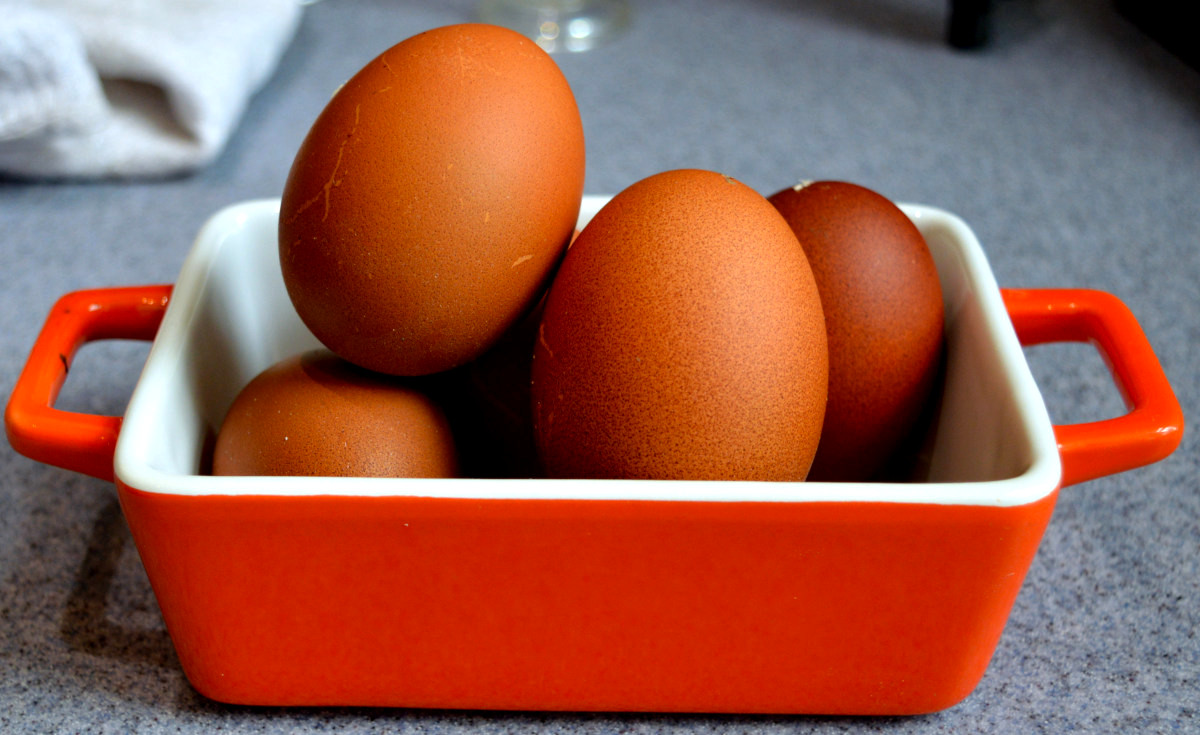
Egg Colour: Uniformity is key. You'll typically show a plate of one, three, six or twelve eggs. The judge is looking for a set of eggs that are all the same beautiful, deep brown shade. It’s quite a challenge to get a perfectly matched set, but so rewarding when you do!
Below: My egg coming second in the "contents" section of the contest.
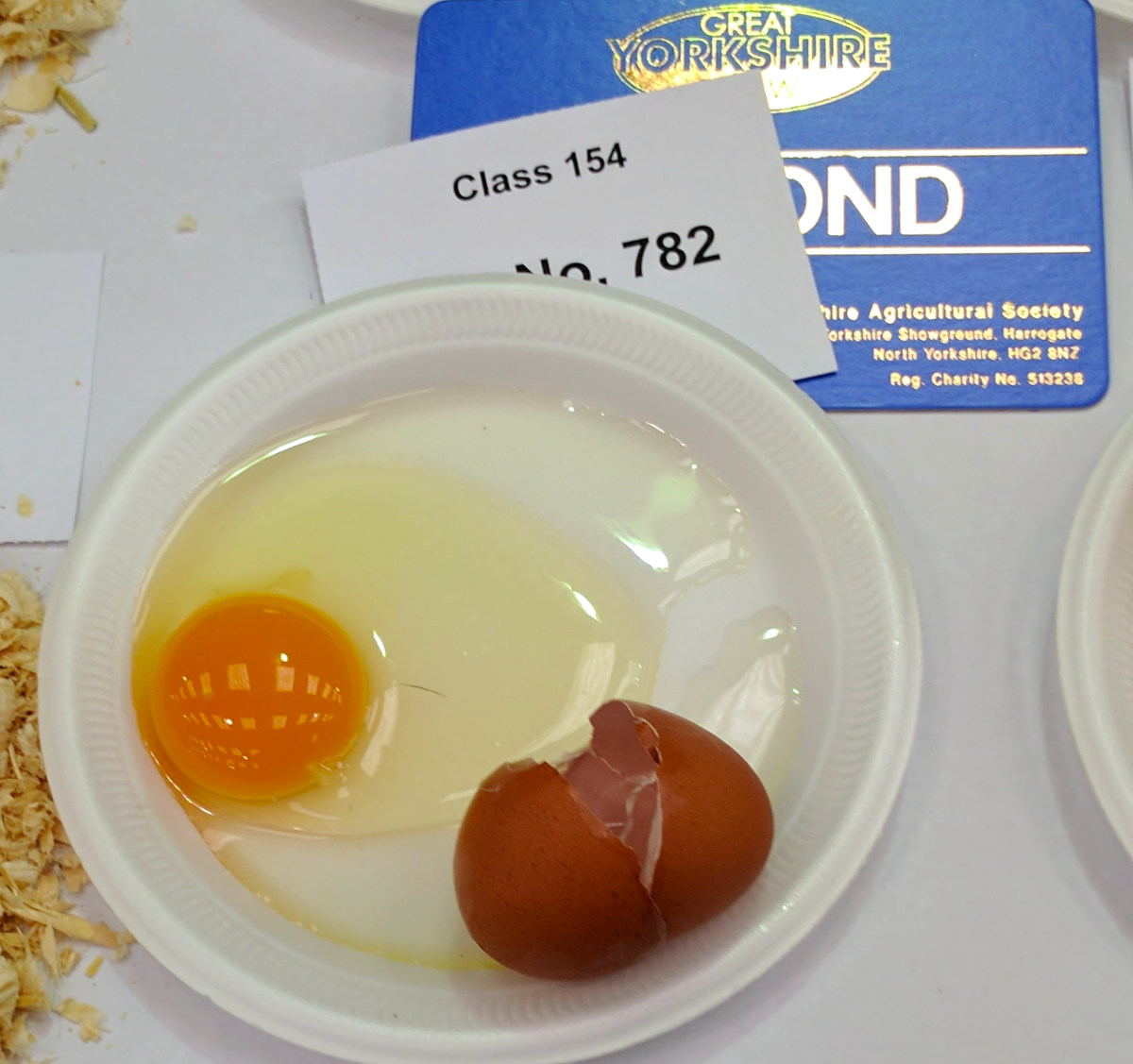
Shape and Size: Eggs should be a classic oval shape, not too round and not too pointy. Again, uniformity across your entry is crucial. They should also be of a good, consistent size, typically large for the Barnevelder.
Below: Here is a judge evaluating eggs. Notice how closely they are scrutinised and weighed.
Shell Texture: The shells should be smooth, strong, and free from any cracks, blemishes, or odd lumps and bumps. No wrinkles allowed here!
Freshness and Cleanliness: This almost goes without saying, but eggs must be fresh and impeccably clean. Do not wash your eggs for showing, as this removes the bloom (the protective cuticle) and can make them look dull. Instead, ensure your nesting boxes are super clean to collect pristine eggs. A gentle wipe with a dry, soft cloth is usually all that's needed, if anything.
Barnevelders and 4-H: A match made in poultry heaven:
Barnevelders are a dream for 4-H members, and I’ve seen kids light up when they work with this breed. Their gentle nature makes them easy for young handlers to manage, even during the chaos of showmanship classes.
Barnevelders’ striking looks and reliable egg production make them ideal for 4-H projects. Kids can showcase the birds in breed classes or enter their eggs in competitions, learning responsibility and animal care along the way.
The breed’s moderate size—hens weigh about 6 pounds, roosters around 8—means they’re manageable for younger kids, unlike larger breeds.
4-H programs emphasise education, and Barnevelders offer plenty to study. Kids can dive into the genetics of those laced feathers!, nutrition, or egg quality. Plus, the pride of winning a ribbon with a Barnevelder?
